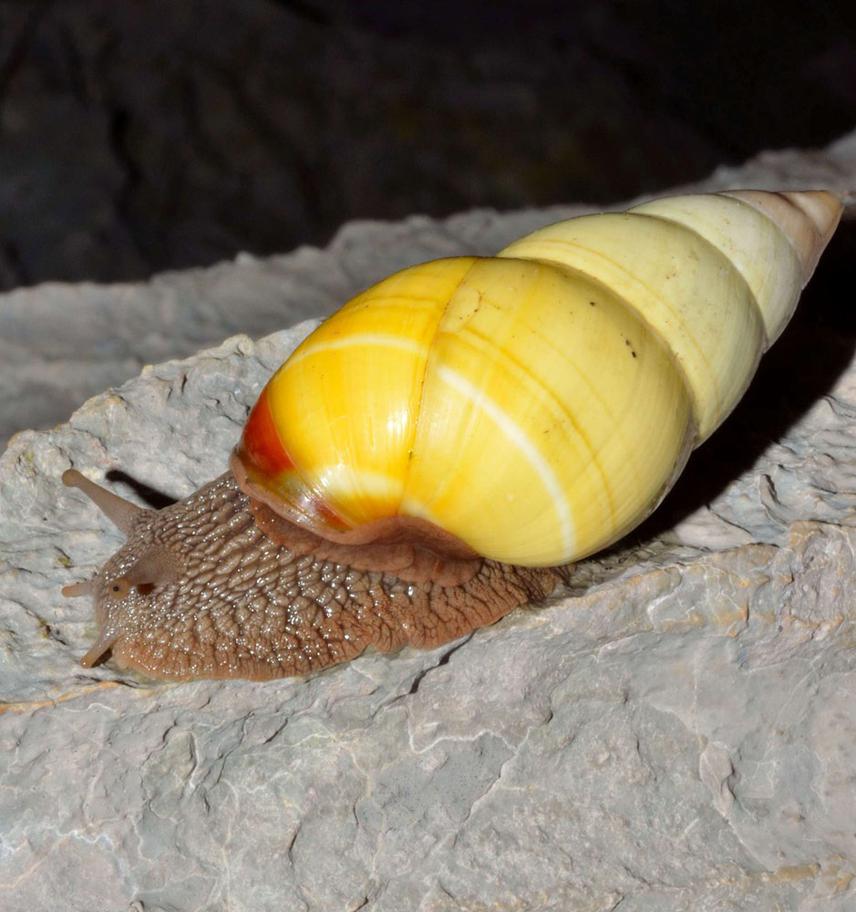Maike Hernández Quinta
The aims of this project are increase the knowledge on the distribution and conservation land snails of the landscape of Mogote and environmental education activities will increase the knowledge of the local people regarding all endemic species.

Liguus flamellus in Mogote El Valle, an endemic land snail from Sierra de los Órganos
The Cuban land snail fauna is one of the most diverse worldwide (95 % of them endemic to the island), containing nearly 1300 known species. Rugged landscape of steep-sided limestone mounts (mogotes) of Viñales National Park (VNP), renowned for their high biodiversity and endemism in general, contain the most diverse land snail fauna of any single Cuban site (134 species, 88 local endemics). The conservation status of these species in the park is unknown. The project goal is to assess said conservation status of the land snail fauna in the Valle de Viñales of VNP through research and training of park personnel.
The most important outcome of this project will increase the knowledge on the distribution y conservation land snails of the landscape Mogote. This study will achieve an assessment of the conservation status of the endemic land snails, the project will provide key information about of the criterion of threat (according to the IUCN criterion) of the species of the Valle de Viñales, VNP. We will contribute to update or modify the operative and management plan of the protected areas and will capacities to the workpeople of the PNV for threatened species monitoring. The project also will allow development of a land snail guide of the Valle de Viñales that in the future will be part of the land snail guide to VNP.
Field trips to obtain data about individual abundance all endemic species, the use of ecological substrates by the species and the determination of the conservation status of habitat within of the landscapes. The methodology to follow will be: Three trips in rainy season and two trips in dry season of eight days to count the number of individuals by mogote and different stratums in 10 plots (5 in the base and 5 in the top) of 5 x 5 m. Timescale: (May, July and September 2014; and November and December 2014, February – March 2015). Determining and listing the causes that affect the distribution of the endemic species in the landscape. Timescale: (May, July and September 2014; and November and December 2014, February – March 2015). Environmental Educational Activities: talks and distribution of informative cards of the endemic species to the park personnel, children and government of the area where the species are living. September, October, December (2014) and March, April (2015).